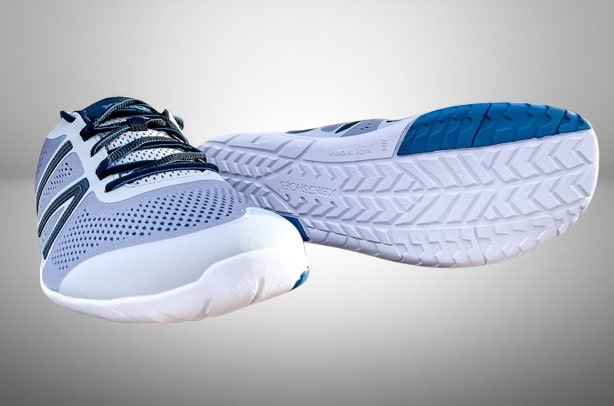Zero drop shoes with a wide toe box are designed to promote natural foot movement by mimicking the way you would walk or run barefoot. They keep the heel and forefoot at the same level (zero drop) and allow your toes to splay naturally (wide toe box). This combo is popular among people who value foot health, barefoot-style walking/running, or want relief from foot issues like bunions or plantar fasciitis.
Common Types of Zero Drop Shoes with Wide Toe Box
Here are the main categories and some well-known brands that offer them:
🥾 Barefoot / Minimalist Shoes
Lightweight, flexible, and designed for natural movement.
-
Vivobarefoot
Known for extremely minimal soles, wide toe boxes, and stylish barefoot shoes for casual, hiking, and performance use.
Get the look: Vivobarefoot
-
Xero Shoes
Offers zero drop with flexible soles. Models like the Prio, Hana, or TerraFlex are good for running, hiking, or everyday wear.
Get the look: Xeroshoes
-
Lems Shoes
Offers minimalist hiking and casual boots with more cushioning than Vivobarefoot or Xero. The Boulder Boot is a popular model with a wide toe box and zero drop.
Get the look: Lems
👟 Running & Athletic Shoes
Designed for runners or athletes who want a natural gait.
-
Altra Running
Famous for their “FootShape” wide toe box and zero drop platform. Good for road running, trail running, and walking.
Popular models: Altra Escalante, Lone Peak, Timp, Torin.
Get the look: Men’s Lone Peak / Women’s Lone Peak
-
Topo Athletic
Offers shoes with a roomy toe box, and some models have low to zero drop.
(Note: Not all Topo shoes are zero drop; check each model.)
Get the look: Men’s Phantom 3 / Women’s Phantom 3
👞 Casual / Everyday Footwear
Natural foot-shaped shoes for daily use.
-
Be Lenka
Stylish barefoot shoes for casual, work, and even dressy wear. All zero drop with a wide toe box.
Get the look: Belenka
-
Feelgrounds
Modern, minimalist sneakers and sandals with zero drop and wide toe boxes.
Get the look: Feelgrounds.
-
Wildling Shoes
Barefoot shoes made with sustainable materials, ultra-flexible soles, and natural foot shapes.
Get the look: Wildling.
🥾 Hiking / Tactical / Work Boots
Rugged shoes for harsh conditions that still offer natural movement.
- Xero Xcursion Fusion or Xcursion 2
Waterproof, zero drop hiking boots with wide toe boxes.
Get the look: Men’s Xero Xcursion Fusion
-
Belleville Mini-Mil
A minimalist military-style boot with zero drop and decent toe space.
Get the look: Mini-Mil TR105 8″ Tactical Boots
-
Lems Boulder Summit
Combines wide toe box, zero drop, and a rugged outsole. Great for hiking or light combat-style use.
Get the look: Men’s Boulder Summit Boot || Women’s Boulder Summit Boot
🩴 Sandals
Open-toed zero drop footwear with foot-shaped designs.
-
Luna Sandals
Great for trail and road running.
Get the look: Luna Sandals
-
Xero Shoes Z-Trail EV
Lightweight, adjustable barefoot sandals.
Get the look: Men’s Z-Trail EV/ Women’s Z-Trail EV
✅ What Are Zero Drop Shoes with a Wide Toe Box?
➤ Zero Drop
-
Means no height difference between the heel and the forefoot.
-
Your foot lies flat—just like when you’re barefoot.
-
Encourages a natural gait and posture by keeping your body aligned.
➤ Wide Toe Box
-
The front of the shoe is wider, especially around the toes.
-
Allows your toes to spread naturally instead of being squished together.
-
Promotes better balance, stability, and foot strength.
🌟 Key Benefits
🦶 1. Natural Foot Function
-
Lets your feet move the way they’re designed to—no elevated heels or cramped toes.
-
Encourages proper toe splay, which supports foot arches and stabilizes your stride.
💪 2. Stronger Muscles and Arches
-
Zero drop footwear can help build intrinsic foot muscles and reduce overreliance on arch support.
🩺 3. Helpful for Foot Pain & Conditions
-
Often used by people managing:
-
Bunions (extra toe room = less pressure)
-
Plantar fasciitis
-
Morton’s neuroma
-
Hammer toes
-
Flat feet or collapsed arches
-
🧍 4. Better Posture & Joint Alignment
-
A flat base can help realign your body from the feet up, reducing stress on knees, hips, and lower back.
🏃 5. Encourages Forefoot or Midfoot Striking
-
In runners, this can reduce impact forces on the knees compared to heel striking (though transition is key).
⚠️ Things to Watch Out For
🕒 1. Transition Period
-
If you’re used to cushioned or high-heel drop shoes, switching suddenly can cause calf soreness or even injury.
-
Gradual adaptation is key: start wearing them for short walks and increase slowly.
🧱 2. Less Cushioning (Depends on Model)
-
Many zero drop shoes are minimalist—thin soles, no padding.
-
Not ideal for everyone, especially on hard surfaces or for heavy impacts—unless properly adapted.
👟 3. Not All Wide Toe Boxes Are Equal
-
Some brands call their shoes “wide,” but they’re still narrow by foot anatomy standards.
-
Look for shoes shaped like real feet, not tapered like fashion shoes.
👥 Who Can Benefit Most
| Use Case | Why It Helps |
|---|---|
| Runners | Improves form, foot strength, and reduces over-striding. |
| Hikers | More ground feel, foot control, and natural toe splay on rough terrain. |
| People with Bunions or Toe Pain | Wide toe boxes relieve pressure and help toes align naturally. |
| Office/Everyday Wearers | Helps undo damage from years of narrow, elevated footwear. |
| Children | Supports natural foot development (many brands now offer barefoot-style kids’ shoes). |
🧠 Quick Tips Before Buying
-
Trace your foot and compare it to the shoe outline—if the shoe tapers more than your foot, it’s not truly “wide toe box”.
-
Zero drop ≠ barefoot – some zero drop shoes have thick cushioning (like Altra), while others are minimalist (like Vivobarefoot).
-
If transitioning from standard shoes, start slow (15–30 minutes per day) and stretch your calves often.
